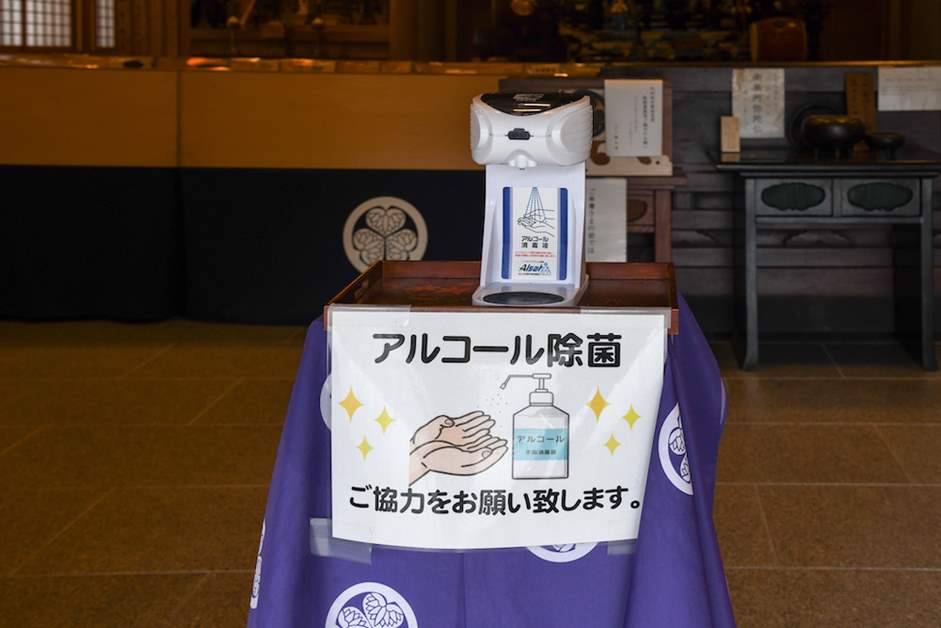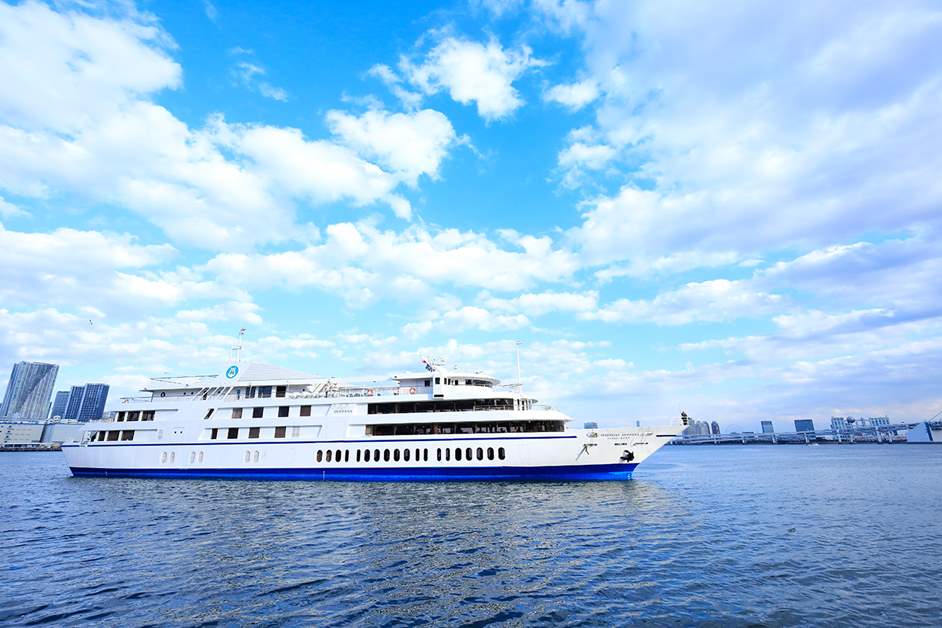Support tourist spots that are doing their best! Special feature on tourist facilities in Minato-ku, Tokyo, where infection control measures are in place
A complete ending to the novel coronavirus is still not in sight. The size of the impact that these infections have had on the tourism industry goes without saying, and there have been more than a few tourist spots in Minato-ku, Tokyo that have been forced to impose self-control on their operations. Now that regular life is returning under a new way of living, the tourist spots that had shut themselves down are gradually beginning to resume their operations while imposing various infection control measures. Based on these circumstances, we will carry out our project this month to support tourist spots in Minato-ku, Tokyo that are doing their best, as we cover the efforts of 4 locations. As the atmosphere of self-quarantine lingers, there must be many people seeking passing moments of refreshment. By all means, use this as reference for leisure that is inexpensive, close, short, and most of all, reassuring.
(*The information is current as of July 16th. There is a possibility that the hours and content have changed due to the novel coronavirus. Before going out, please check the latest information using resources such as each facility’s official website.)
(*The information is current as of July 16th. There is a possibility that the hours and content have changed due to the novel coronavirus. Before going out, please check the latest information using resources such as each facility’s official website.)
Tokyo Tower / “Open-air Outdoor Stairs Walk” Open Every Day
Although “Tokyo Tower” had temporarily closed its entire building, including the observation platform, on April 8th, it has gradually resumed its operations since May 28th and is now back in operation with the nighttime hours of operation shortened by 1 hour (as of July 18th).
Tokyo Tower, which is a tourist spot that represents Tokyo, has presented thorough measures to prevent the spread of infections and posted its infection control measures for the facility and requests for visitors on its website. In terms of measures for the facility, there are thorough health management for attendants and staff members through temperature taking every morning and application of masks, a sheet to prevent spray has been set up in the ticketing counter and information desk, antibacterial coating has been applied throughout the building, and social distancing markers have been set up. Visitors are asked to wear masks and have their temperature taken before entering. There are also additional efforts to allow everybody to safely enjoy sightseeing, such as reducing the occupancy of the elevators and observation platform.
Also, as a special project that would only be possible under these circumstances, the “Open-air Outdoor Stairs Walk,” which is usually limited to Saturdays, Sundays, and holidays, is open every day. Visitors may climb the roughly 600 steps connected to the tower using their own feet to reach the main deck, which is 150 meters above the ground.
When you imagine the distance to the observation platform while looking up from the ground, it probably appears to be a very far way away, but it is roughly 12 minutes until the destination. There are quizzes during the walk, and you are able to experience the changing scenery as you climb better than you would from the elevator, so you should be able to climb it without feeling tired. It is probably a good way to work on your fitness, since it is difficult to get exercise during life in self-quarantine.
In addition, the Tower Daijingu Shrine on the 2nd floor of the main deck features votive wooden tablets of the “Tower Amabie,” which is an unexpected fusion of that mythical creature that suddenly found fame as an amulet against diseases and Tokyo Tower. You can experience a “new Tokyo Tower” through a variety of events.
To add, the annual “Milky Way Illumination” will also be held this year. Over 20,000 light bulbs produce the sparkle of 7 colors of light. This illumination in the sky that is enjoyed in the summer abounds with a romantic mood.
Since there is a designated parking lot within the property, another reassuring point is that you can visit in your own car while avoiding the usual contact with others. Even if you have already climbed it before, how about using this opportunity to come enjoy the sights from the observation platform again?
Funasei / Enjoy Exquisite Views and Piping Hot Tempura Aboard a Japanese Houseboat
The Japanese houseboat operator “Funasei” resumed operations on May 28th after about 3 months of closure. Even in Tokyo, the Japanese houseboat is a limited way to have fun that is only available in the Sumida River. The scenes of boats floating on the Sumida River and Tokyo Bay bring emotions from the Edo period to the present.
Funasei, which opened in 1949, operates 7 Japanese houseboats of varying sizes with occupancy ranging from 20 to 120 people. Parties of 20 and more can rent out a boat, while parties of 2 or more will share a boat with others on an indeterminate schedule. You can enjoy the views from the boat while savoring delicious food.
Since it resumed operations, it acquired the “thorough infection control sticker” issued by the Tokyo Metropolitan Government and has been thorough about measures to prevent infections. Everybody sanitizes their hands before going onboard, the layouts on the boats were reconsidered for social distancing, there is lots of ventilation, and the tables have devices to prevent spray.
The basic route offers a ride of about 2 and a half hours. Boats leave the dock in Kitashinagawa, stop near Odaiba for a while, pass under the Rainbow Bridge, and head to Sumida River while offering views of Takeshiba Pier and Tokyo Tower. Then, they pass under unique bridges like Kachidoki Bridge and Tsukuda Bridge, pass near modern buildings, and turn around before Eitai Bridge once Tokyo Skytree can be seen.
The wooden cabin offers a roomy space with high ceilings and allows you to stretch your legs in the sunken kotatsus or table seats. It is comfortable, as it has restrooms, air conditioning, and heating. There is also an observation deck, and the 360-degree view from the water is exceptional.
Also, the food on the boat that is highlighted by the freshly-fried tempura consists of Japanese courses made with plenty of seasonal ingredients. The food is also provided with measures to prevent infections by avoiding contact and sharing as much as possible.
When renting out a boat, you can choose your window between a 12:00 p.m. departure and a 3:30 p.m. return during the day (between a 12:00 p.m. departure and 3:00 p.m. return for Sundays and holidays) and between a 5:00 p.m. departure and a 9:30 p.m. return during the night (between a 4:30 p.m. departure and a 8:30 p.m. return for Sundays and holidays). Shared boats (reservations necessary) are available in the evening on certain days, so please check the shared ride calendar on the official website for details.
When renting out a boat, you can choose your window between a 12:00 p.m. departure and a 3:30 p.m. return during the day (between a 12:00 p.m. departure and 3:00 p.m. return for Sundays and holidays) and between a 5:00 p.m. departure and a 9:30 p.m. return during the night (between a 4:30 p.m. departure and a 8:30 p.m. return for Sundays and holidays). Shared boats (reservations necessary) are available in the evening on certain days, so please check the shared ride calendar on the official website for details.
Zojoji Temple / Observe Numerous Treasures Related to the Family Temple of the Tokugawa Clan
“Zojoji Temple” is the family temple of the Tokugawa Clan and has many remarkable sights on its vast premises, including the San Gedatsu Mon Gate, which is a important cultural property of Japan, the palace, and the cemetery of the Tokugawa Clan. Zojoji Temple has also been affected by the novel coronavirus through the scaling down and cancellation of regular events, as the Jizo Son Bon Odori Tournament in July and Zojoji Temple Takigi Noh in September were both canceled.
Given these circumstances, worshipers are currently being admitted in certain facilities with various countermeasures to prevent infections, such as reduced hours, thorough cleaning, ventilation, and provision of alcohol-based disinfectants. The Zojoji Temple Treasure Gallery, which had been temporarily closed on March 2nd, a;so resumed operations on June 1st. You can observe valuable display items in the gallery with preventative measures.
Since 2016, project exhibitions related to the history and culture of Zojoji Temple have been held on an irregular basis at this Treasure Gallery. It also permanently displays a model of the Taitoku-in Mausoleum and a portion of the Five Hundred Arhats drawn by Kano Kazunobu.
Taitoku-in Mausoleum refers to the group of buildings constructed on the south of the Zojoji Temple premises by Tokugawa Iemitsu, the 3rd Tokugawa Shogun, in 1632 as a mausoleum (building to worship the spirits of ancestors) for Hidetada, the 2nd Tokugawa Shogun. It was a valuable mausoleum that was designated as a national treasure, but it burnt down during World War II. The model of the Taitoku-in Mausoleum is a reproduction of the central portion of the Taitoku-in Mausoleum with a scale of 1/10 and was gifted by the City of Tokyo to the British Government in 1910 during the Japan-British Exhibition in London. It is part of the Royal Collection but is being exhibited here on a long-term loan from the British royal family.
As for the Five Hundred Arhats, roughly 10 of the 100 hanging scrolls are exhibited at once, with the displayed scrolls changing periodically. How about going out to observe the valuable treasures that represent the luxury of the Tokugawa Clan while praying for the prompt return of serenity?
Tokyo Bay Cruising Restaurant SYMPHONY / A Luxury Cruise Where You Can Enjoy Authentic Cuisine
“Tokyo Bay Cruising Restaurant SYMPHONY” departs from Hinode Pier. SYMPHONY had lessened the number of cruises it offered around the spring, but it has resumed full operation of its cruises since July 18th.
SYMPHONY operates the 4 cruises of the Lunch Cruise (130 minutes), Afternoon Cruise (50 minutes), Sunset Cruise (120 minutes), and Dinner Cruise (150 minutes) with different durations. Being able to select a cruise based on your budget and objectives is part of the appeal. The Dinner Cruise, which lasts the longest, offers views of Odaiba while passing under the Rainbow Bridge and follows a romantic route in the shape of a heart through the Tokyo Bay with a view of Haneda Airport.
Both of its cruise ships, which are the “Moderna” with a capacity of 600 people and the “Classica” with a capacity of 450 people, offer refined spaces. Food is also served onboard, and you can select your preferred plan from a variety of choices, including authentic French and Italian cuisine and traditional sushi prepared onboard.
*The photos are sample images.
Measures to prevent infections are in place, such as disinfection of the shipboard, devices to prevent spray on the counters, thorough social distancing, and staggered onboarding times. The manager also details their preparedness to welcome guests by stating, “SYMPHONY offers an irreplaceable time spent with important people, delicious food, and wonderful views. We flexibly implement measures to prevent infections based on government guidelines and wholeheartedly await your visit.”
Although many days of sheltering in place will continue, you can take a short trip on a luxury cruise ship for a momentary break. Feeling the Tokyo Bay breeze on your skin is sure to make you feel refreshed!







.jpg)








